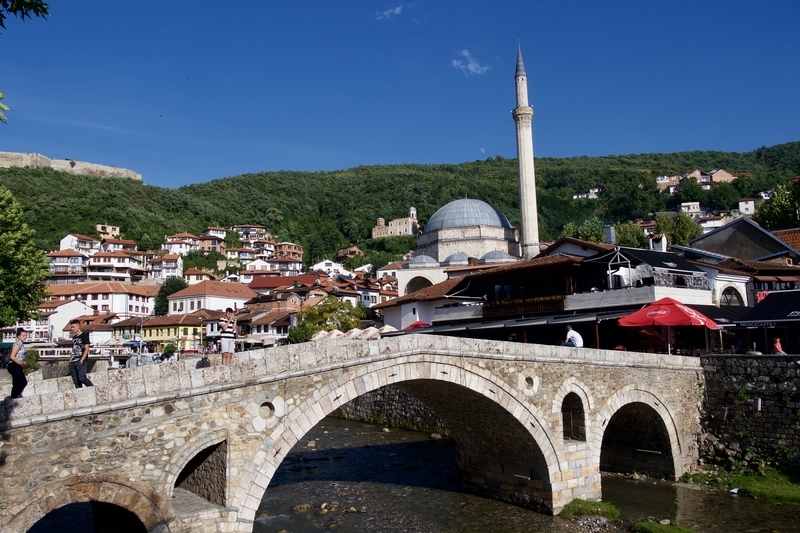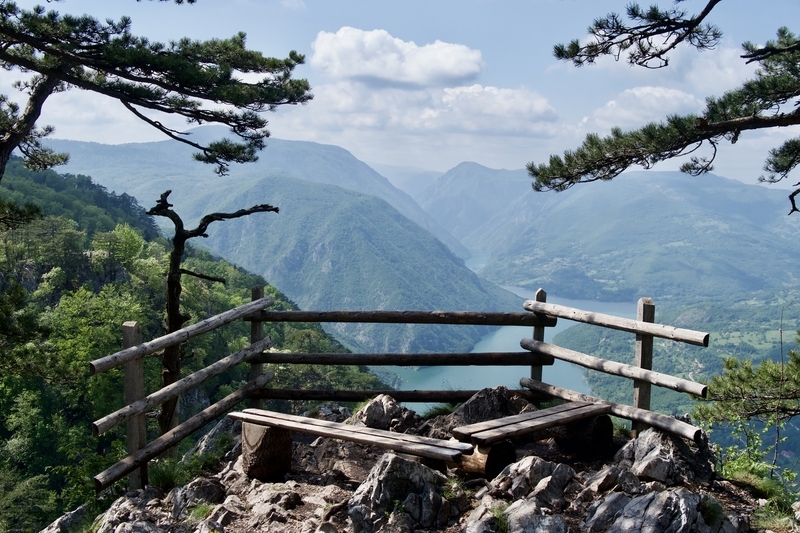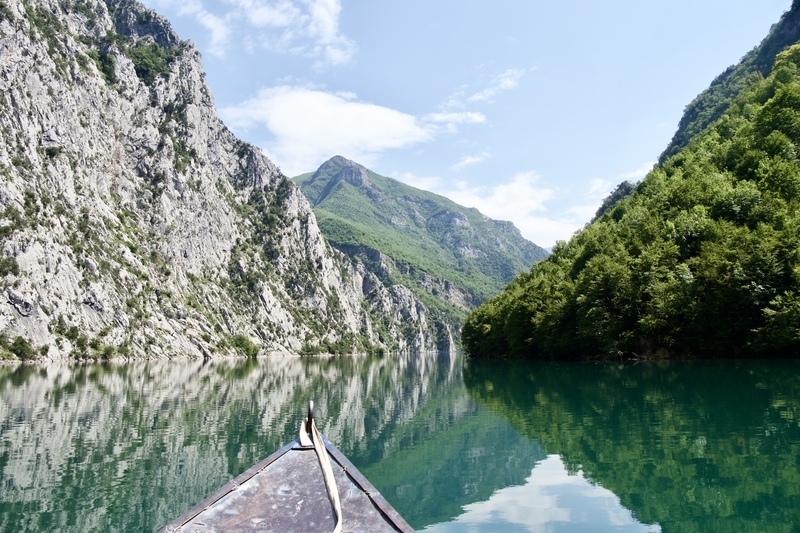
Exploring Northern Albania’s Accursed Mountains
Once a mysterious and closed-off land, Albania is now a burgeoning tourist destination that boasts some of Europe’s most intriguing gems.
The formerly insular country has long been a Mediterranean enigma—its unspoiled nature and rich history all but erased from itineraries of even the most intrepid explorers.
But today, Albania is beginning to receive some of the credit it deserves.
The country boasts pristine beaches, ancient ruins, and
And in northern Albania, the Accursed Mountains conceal incredible hiking opportunities, including the epic trail from Valbona to Theth.
NORTHERN ALBANIA’S ACCURSED MOUNTAINS
While it still has a long way to go before it attracts the same volume of tourists as nearby Croatia or Greece, the country is beginning to lure nature enthusiasts and lovers of off-the-beaten-path travel.
Along Albania’s beaches and UNESCO sites, the Accursed Mountains have been largely responsible for putting Albania on the map.
The Accursed Mountains, also known as the Albanian Alps, extend from the northern reaches of the country into southern Kosovo. They form the southern portion of the Dinaric Alps.
For hikers and outdoor-lovers, the Accursed Mountains offer a wealth of stunning scenery.
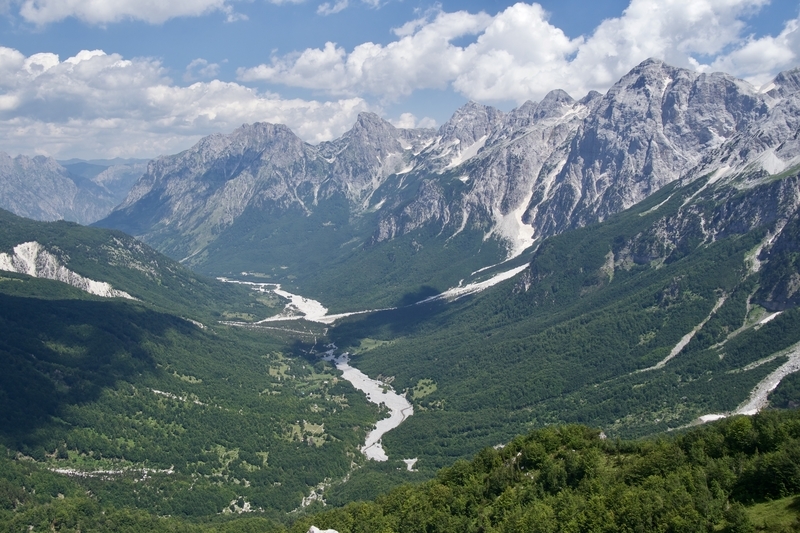
There are a number of hiking trails that criss-cross Albania’s Accursed Mountains. The most popular route, the spellbinding path from Valbona to Theth, showcases some of the most dramatic alpine scenery in the Balkans.
For hikers seeking a longer foray into the Albanian wilderness, the 192km Peaks of the Balkans trail traverses parts of Albania, Kosovo and Montenegro.
SHKODER: GATEWAY TO THE ALBANIAN ALPS
Shkoder is the gateway to northern Albania. Located just over the Montenegrin border, the town—famous for being the birthplace of Mother Theresa—is worth exploring for a day or two.
I’d driven through Shkoder briefly in 2007, during a Balkan road trip with my family. Our brief visit was so long ago, that I have few memories of the town. The only images that remain imprinted in my mind are of concrete buildings and bicycles.
More than a decade later, however, the city is completely different from the fragmented images I’d stored away in my head. Bikes are still everywhere. The castle still looms over town. The Mother Theresa statue is still standing.
But the sterile air has vanished. The city is lively and pleasant. The main pedestrian drag bustles with people young and old, shoppers and bar-hoppers, groups of friends and a few odd tourists.
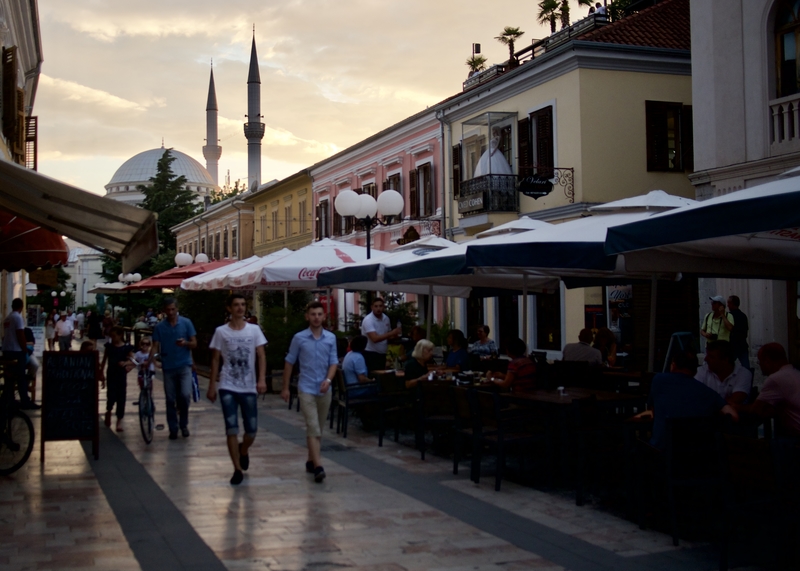
Shkoder is the center of Albania’s Gheg cultural region and one of the oldest cities in Europe.
Many travelers stop by the northern Albanian town of Shkoder en-route to Lake Koman or Valbona.
Yet, it is worth spending a few days in this friendly city–not least because of Shkoder’s pleasant, bikeable atmosphere and vibrant pedestrian promenades.
-
THE ROZAFA CASTLE IN SHKODER
The Rozafa Castle–Shkoder’s top tourist attraction– towers over the city. Founded by the Illyrians in antiquity and subsequently rebuilt by the Venetians and then the Turks, the fortress affords spectacular views in all directions.
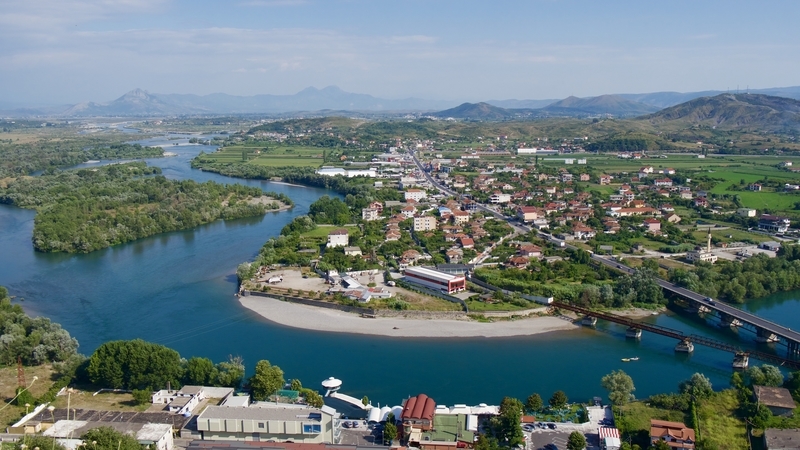
To the north, Lake Skadar unfolds outward, as far as the eye can see. To the south, the Drina and Bojana Rivers converge, before emptying into the vast, mountain-rimmed lake.
-
LAKE SKADAR
Straddling the border of Montenegro and Albania, Lake Skadar is the largest body of freshwater in southern Europe. It is much larger than the more-famous Lake Ohrid in nearby North Macedonia, though it has a far less developed tourism infrastructure.
Lake Skadar is a vast nature reserve that has been blissfully devoid of large developments.
From town, bike paths lead cyclists along the lakeshore, past small sandy beaches and restaurants serving fresh fish.
KOMANI LAKE FERRY IN NORTHERN ALBANIA
Lake Koman was formed in 1978 by the damming of the Drina River. It is a spectacular area, with towering rocky cliffs and mountains that are peppered with green vegetation. Along the waterway, small villages have remained cut off from the rest of the world.
Komani Lake is both a tourist attraction and a transportation corridor.
Since there are no roads that connect larger towns to some of the small communities along the lake, the boat we took across Lake Koman was meant for ferrying locals to and from their remote villages.
Along the way, we picked people up and dropped them off–watching them haul a week’s worth of food and supplies to their lakeside homes.

The upside to traveling through such a remote area with no road access, is that nature truly prevails due to lack of development.
The downside, is that there are no trash collection systems that service the lakeside communities.
As a result, plastic litter is a common sight in this otherwise pristine environment.
Aside from the unfortunate prevalence of plastic bottles littering the mirror-like water, however, the boat ride across Koman Lake is a spectacular gateway into the spellbinding Accursed Mountains.
HIKING IN THE ALBANIAN ALPS
The hike between Valbona and Theth is one of the most popular activities in northern Albania. Part of the six day ‘Peaks of the Balkans’ trek, the trail leads hikers through virgin forest, along dried out riverbeds and past jaw-dropping vistas.
-
VALBONA VALLEY
The small town of Valbona lies within the Valbona Valley National Park—an alpine wonderland that spans 8,000 hectares about half an hour northeast of Bajram Curri.
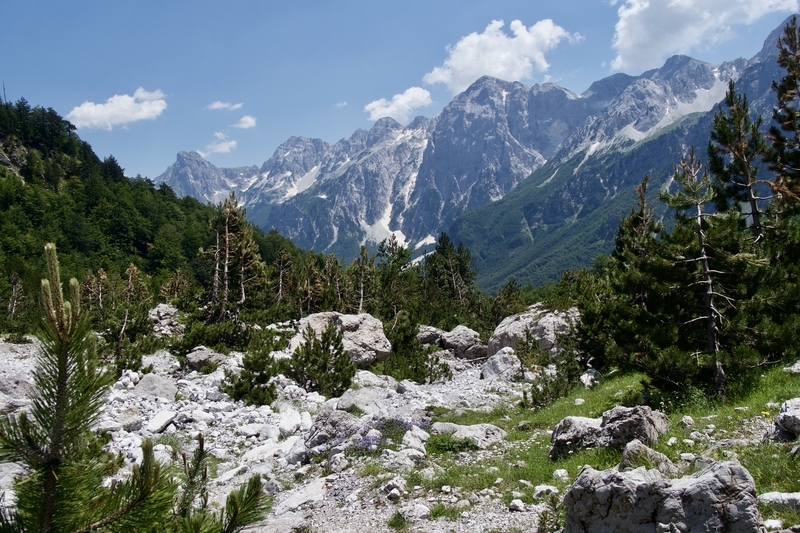
The Valbona Valley has become a popular destination for hikers and nature lovers due to its towering mountains that rival the Alps of western Europe.
The peaks of northern Albania certainly wouldn’t look out of place in Switzerland or Austria.
-
THE VALBONA-THETH HIKE
The path from Valbona to Theth was once an old mule trail that traversed the heart of the Accursed Mountains. There are still no roads between the two towns, making the hiking trail the only link between the country’s two most popular mountain villages.
The hike from Valbona to Theth is a whole day affair that takes 6-10 hours to complete, depending on hiking speed, starting point and number of stops.
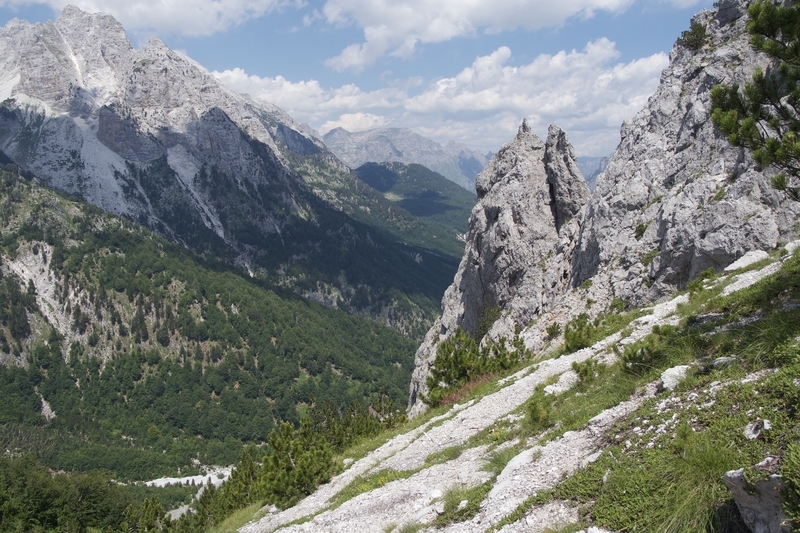
The first bit of the hike follows the paved main road that runs through Valbona. The paved section of road ends at Llomi. Many hikers choose to begin their hike at this point, though some hire 4X4 vehicles to take them along the relatively flat riverbed, to Rragam.
Following a level walk along a scree-filled riverbed, the path climbs through Alpine forest, before opening up with spectacular panoramic views of the valley. Along the way, three cafes offer exhausted hikers light refreshments and refills of fresh spring water.
From the summit of the hike, the 360 degree views of the Valbona and Theth valleys are simply spellbinding.
-
THETH ALBANIA
After a quick break at the top of the mountain, we continued onward, to the picturesque village of Theth. The forest became denser as we approached the Theth Valley, covering the stone massifs in a blanket of greenery.
Surrounded by towering mountains and only accessible by hiking trail or dirt road, the little mountain town of Theth is an idyllic and untouched slice of heaven.
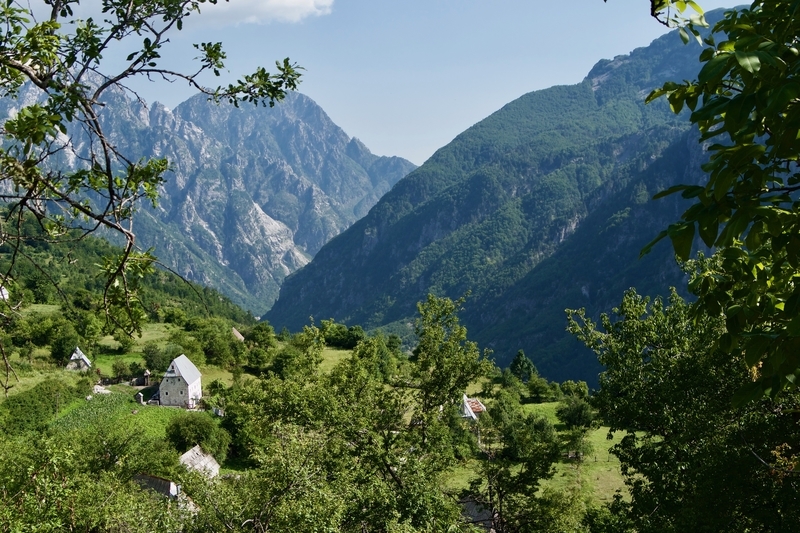
Had we not been planning to travel on to Prizren Kosovo the following morning, I would have loved to spend a few extra days reveling in Theth’s stunning surroundings.
TIRANA: ALBANIA’S COLORFUL CAPITAL
Unless you are traveling overland from a nearby country, your trip to Albania will likely begin and end in Tirana.
Lively and colorful, Tirana is a whirlwind of pulsing nightlife and eclectic architecture. The city has undergone a transformation of epic proportions since the fall of the Enver Hoxha’s iron-fisted regime.
And everywhere, splashes of color have brightened up the drab grey apartment blocks that once characterized the city.
Former mayor of Tirana, Edi Rama, was a painter before he became a politician. Whisking his brush across many of Tirana’s old apartment buildings and communist-style high rises, Rama added color everywhere—ensuring that the Albania’s visual transformation mirrored the country’s newfound optimism.
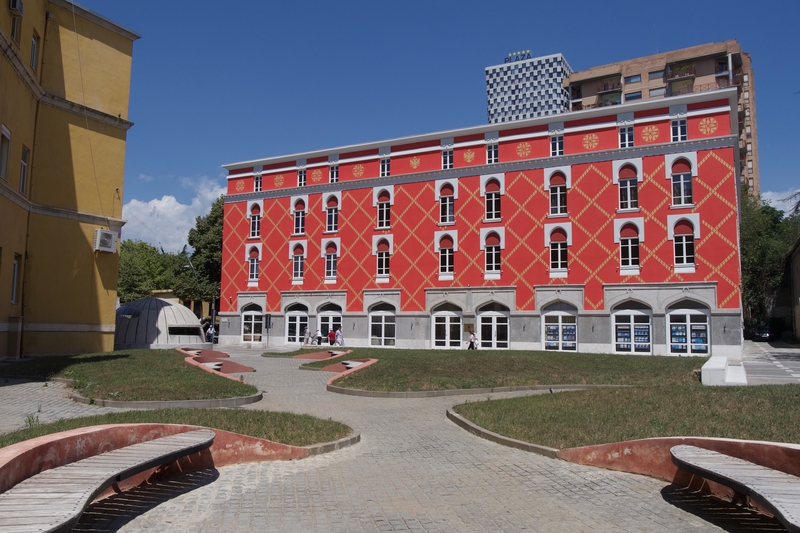
Tirana’s architecture blends Illyrian, Roman and Ottoman influences. The city is a study of contrasts, where reminders of the country’s communist legacy stand seamlessly juxtaposed with trendy bars, outdoor cafes and pedestrian promenades.
From delicate minarets to offbeat murals, and from the trendy Blloku neighborhood to a particularly hideous concrete pyramid that was designed by Hoxha’s daughter to memorialize her father’s legacy, Tirana’s architectural landscape is unique, unpredictable and full of surprises.
We spent nearly two days in Tirana, before heading into the mountains of northern Albania. Our first stop was Bunk’Art 2—a museum housed in one of the 750,000 bunkers that are scattered about the country. A walk through the museum is at once sobering and highly informative. It is one of the top things to do in Tirana.
There are two Bunk’Art museums in Tirana (named 1 and 2). If you’re looking t0 gain more insight into Albania’s dark history, visiting one of the museums is essential.
WHERE TO STAY IN NORTHERN ALBANIA
Albania’s accommodations are of exceptional value when compared to the rest of Europe.
If you’re planning on hiking from Valbona to Theth, you’ll likely need accommodation in each of the Albanian villages.
-
VALBONA
We stayed at Villa Dini in Valbona and found the lodge to be of exceptional value. It was clean, well-located, and fairly priced. The downside to Villa Dini is that it lies about 3km from the Valb0na-Theth trailhead. If you want something a bit closer to the start of the hike, you might want to consider the highly-rated Hyrmet Demushi B&B in Lomi.
-
THETH
Theth is full of wonderful accommodation options as well. Guesthouse Rrashkadoli offers cheap yet highly-rated rooms. If you want something slightly more upscale, the Guesthouse Marashi appears to be a fantastic option.
-
SHKODER
The Cocja Boutique Hotel in Shkoder boasts exceptional reviews. We stayed at Open Doors B&B and were quite happy with the experience—especially because they were so accommodating with our bags and helped us plan our northern Albania itinerary.
-
TIRANA
While in Tirana, we stayed at the Prime Hotel, positioned just a stone’s throw away from Skanderberg Square. The Prime Hotel is centrally located, exceptionally clean and affordably priced.
SHKODER-VALBONA-THETH TRIANGLE TRANSPORTATION AND LOGISTICS
From our bed and breakfast in Shkoder, we organized transport into the Valbona Valley via Lake Koman.
Our transport picked us up at our hotel and brought us to the Koman ferry terminal, where we caught a local boat to Fierze.
Once we reached Fierze, a minibus brought us the rest of the way to our guesthouse in the Valbona Valley.
On our return trip, we asked our guesthouse to arrange transport back to Shkoder from Theth. They arranged a shared taxi for us, though there is also bus scheduled service between the two locations.
Regular buses also connect Tirana and Shkoder.
Since we planned to do the Valbona-Theth hike as part of a three day loop from Shkoder, we chose to bring a small bag of essentials and leave our large backpacks at the Open Doors Bed and Breakfast. Traveling with only a day pack proved to be a good idea, as the hike from Valbona to Theth was far more challenging than we had imagined.
***
Until recently, Albania’s rugged mountains, historic towns, and UNESCO World Heritage Sites were merely mysterious rumors on most travel maps.
But, following the dissolution of its brutal communist regime in 1991, the small Balkan country swung open its doors.
And now, a quarter of a century after throwing off the shackles of its insular past, Albania’s stunning mountain scenery, crumbling castles and chaotic cities, continue to enchant.
